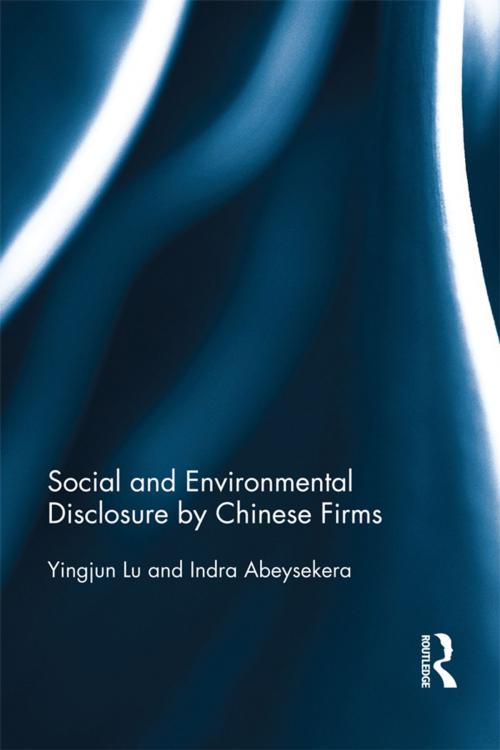| Author: | Yingjun Lu, Indra Abeysekera | ISBN: | 9781317753520 |
| Publisher: | Taylor and Francis | Publication: | March 26, 2014 |
| Imprint: | Routledge | Language: | English |
| Author: | Yingjun Lu, Indra Abeysekera |
| ISBN: | 9781317753520 |
| Publisher: | Taylor and Francis |
| Publication: | March 26, 2014 |
| Imprint: | Routledge |
| Language: | English |
Given the increased social and environmental problems in China, this book looks into the social and environmental (environmental) disclosure practices of socially responsible Chinese listed firms by constructing a stakeholder-driven, three-dimensional, disclosure index. The book contains a three-part study: the first part explores the current status of social and environment disclosure practices. The second part empirically examines the relationship between corporate social and environmental disclosure and various influencing factors (i.e. stakeholders’ power and corporate characteristics). The third part empirically examines the link between corporate social responsibility (CSR) reporting (i.e. publishing a CSR report and the quality of the CSR report) and socially responsible reputation.
The book finds that the CSR report provided more stakeholder-relevant social and environmental disclosure than the annual report. It also finds that corporate characteristics such as firm size, profitability and industry classification are all statistically significant factors influencing social and environmental disclosure of the Chinese firms studied. Shareholders significantly influenced firms’ social and environmental disclosure, and creditors significantly influenced firms’ disclosure related to their environmental performance. The final part of the study reports that publishing a CSR report and CSR reporting quality had a positive influence on firms’ socially responsible reputation and that the CEO/chairman duality negatively influenced firms’ socially responsible reputation. The book also highlights that financial performance and firm size were the two corporate characteristics that had a positive influence on corporate socially responsible reputation.
This book will be of interest to those who are keen to learn more about corporate social responsibilities in the context of Chinese firms.
Given the increased social and environmental problems in China, this book looks into the social and environmental (environmental) disclosure practices of socially responsible Chinese listed firms by constructing a stakeholder-driven, three-dimensional, disclosure index. The book contains a three-part study: the first part explores the current status of social and environment disclosure practices. The second part empirically examines the relationship between corporate social and environmental disclosure and various influencing factors (i.e. stakeholders’ power and corporate characteristics). The third part empirically examines the link between corporate social responsibility (CSR) reporting (i.e. publishing a CSR report and the quality of the CSR report) and socially responsible reputation.
The book finds that the CSR report provided more stakeholder-relevant social and environmental disclosure than the annual report. It also finds that corporate characteristics such as firm size, profitability and industry classification are all statistically significant factors influencing social and environmental disclosure of the Chinese firms studied. Shareholders significantly influenced firms’ social and environmental disclosure, and creditors significantly influenced firms’ disclosure related to their environmental performance. The final part of the study reports that publishing a CSR report and CSR reporting quality had a positive influence on firms’ socially responsible reputation and that the CEO/chairman duality negatively influenced firms’ socially responsible reputation. The book also highlights that financial performance and firm size were the two corporate characteristics that had a positive influence on corporate socially responsible reputation.
This book will be of interest to those who are keen to learn more about corporate social responsibilities in the context of Chinese firms.















